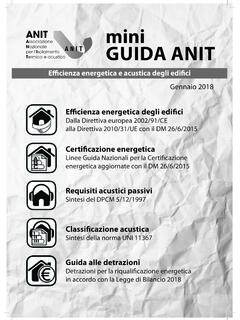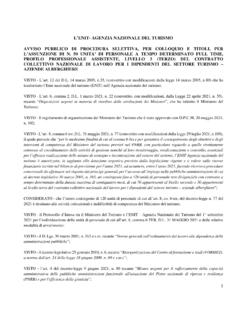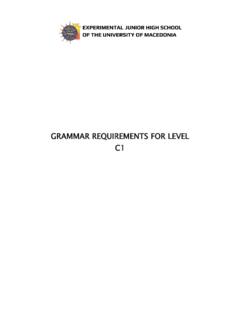Transcription of Classification of Evidence Schemes 1.30 - Neurology
1 Classification of Evidence Schemes Criteria for Rating Therapeutic Studies Class I. A randomized, controlled clinical trial of the intervention of interest with masked or objective outcome assessment, in a representative population. Relevant baseline characteristics are presented and substantially equivalent among treatment groups or there is appropriate statistical adjustment for differences. The following are also required: a. Concealed allocation b. Primary outcome clearly defined c. Exclusion/inclusion criteria clearly defined d.
2 Adequate accounting for dropouts (with at least 80% of enrolled subjects completing the study) and crossovers (with an intent-to-treat analysis if necessary) with numbers sufficiently low to have minimal potential for bias e. For noninferiority or equivalence trials claiming to prove efficacy for one or both drugs, the following are also required: 1. The standard treatment used in the study is substantially similar to that used in previous studies establishing efficacy of the standard treatment ( , for a drug, the mode of administration, dose, and dosage adjustments are similar to those previously shown to be effective).
3 2. The inclusion and exclusion criteria for patient selection and the outcomes of patients on the standard treatment are substantially equivalent to those of previous studies establishing efficacy of the standard treatment. 3. The interpretation of the results of the study is based on an observed-cases analysis. Class II. A randomized controlled clinical trial of the intervention of interest in a representative population with masked or objective outcome assessment that lacks one or two criteria a-e above or a prospective matched cohort study with masked or objective outcome assessment in a representative population that meets b-e above.
4 Relevant baseline characteristics are presented and substantially equivalent among treatment groups or there is appropriate statistical adjustment for differences. Class III. All other controlled trials (including well-defined external, natural history controls) in a representative populations, where the outcome is independently assessed, or independently derived by objective outcome measurement. Class IV. Studies not meeting Class I, II, or III criteria including case reports, case series, consensus or expert opinion. *Note that numbers 1-3 in Class Ie are required for Class II in equivalence trials.
5 If any one of the three is missing, the class is automatically downgraded to a Class III. Criteria for Rating Diagnostic Accuracy Studies Class I Criteria - Cohort study with prospective data collection - Inclusion of a broad spectrum of persons suspected of having the disease - Disease status determination is objective or made without knowledge of the diagnostic test result - Additional Class I criteria: a. Exclusion/inclusion criteria clearly defined b. Both the diagnostic test and disease status measured in at least 80 percent of participants Class II Criteria - Cohort study with retrospective data collection or a case-control study.
6 Study meets criteria a and b (see Class I) - Includes a broad spectrum of persons with and without the disease - The diagnostic test result and disease status are determined objectively or without knowledge of one another Class III Criteria - Cohort or case-control study - Narrow spectrum of persons with or without the disease - The diagnostic test result and disease status are determined by different individuals Class IV Criteria - Studies not meeting Class I, II, or III criteria

![OGNOME Nome, e, se pertinente, altri nomi ] Numero ... - UniFI](/cache/preview/f/1/9/6/6/1/6/c/thumb-f196616cef0f335260b702c142049ee7.jpg)



